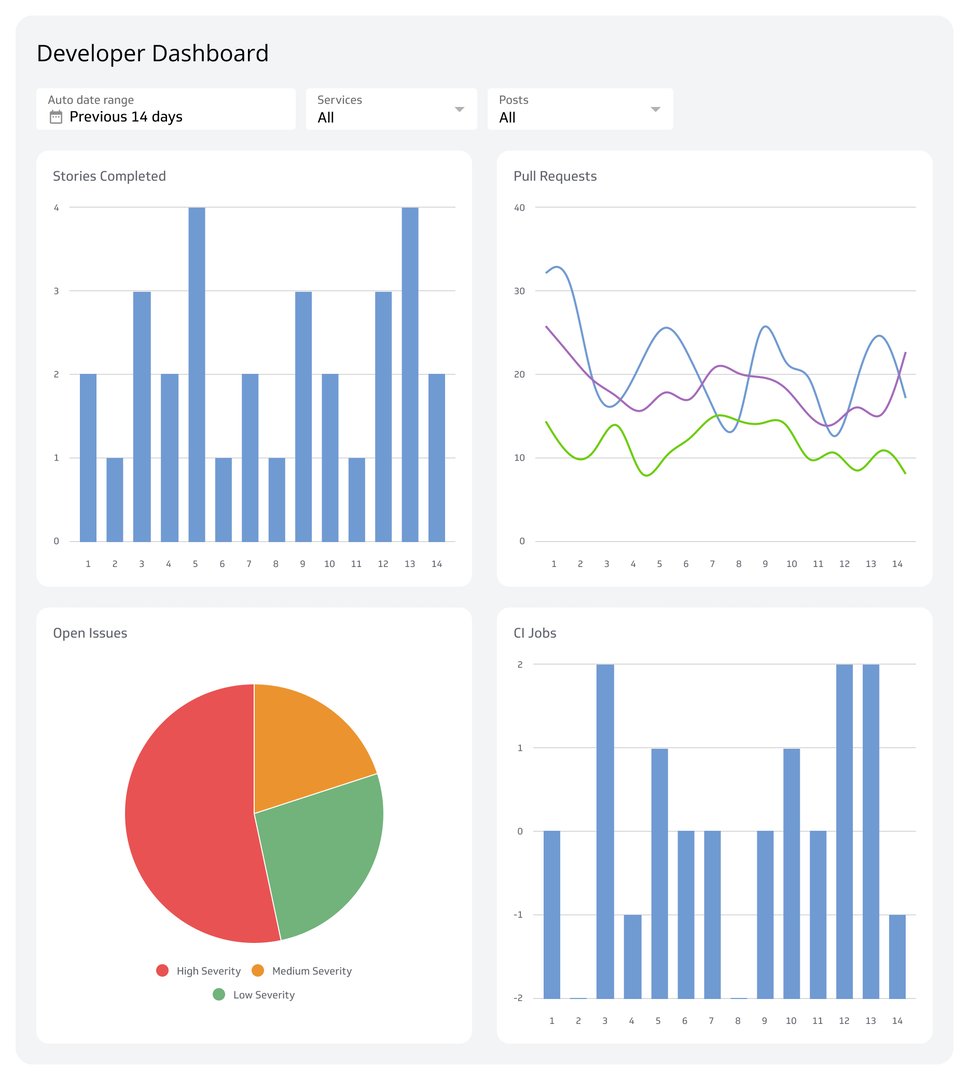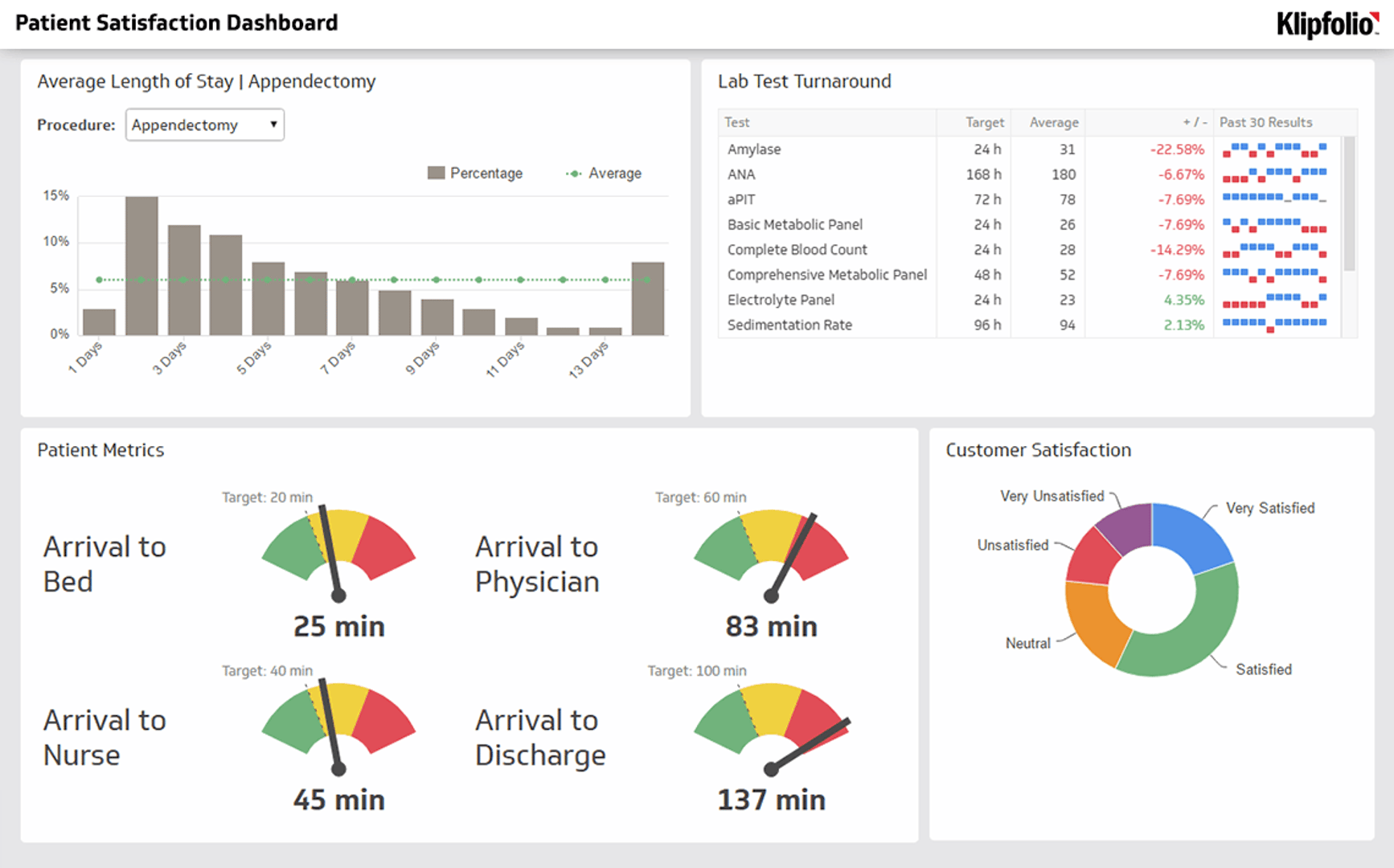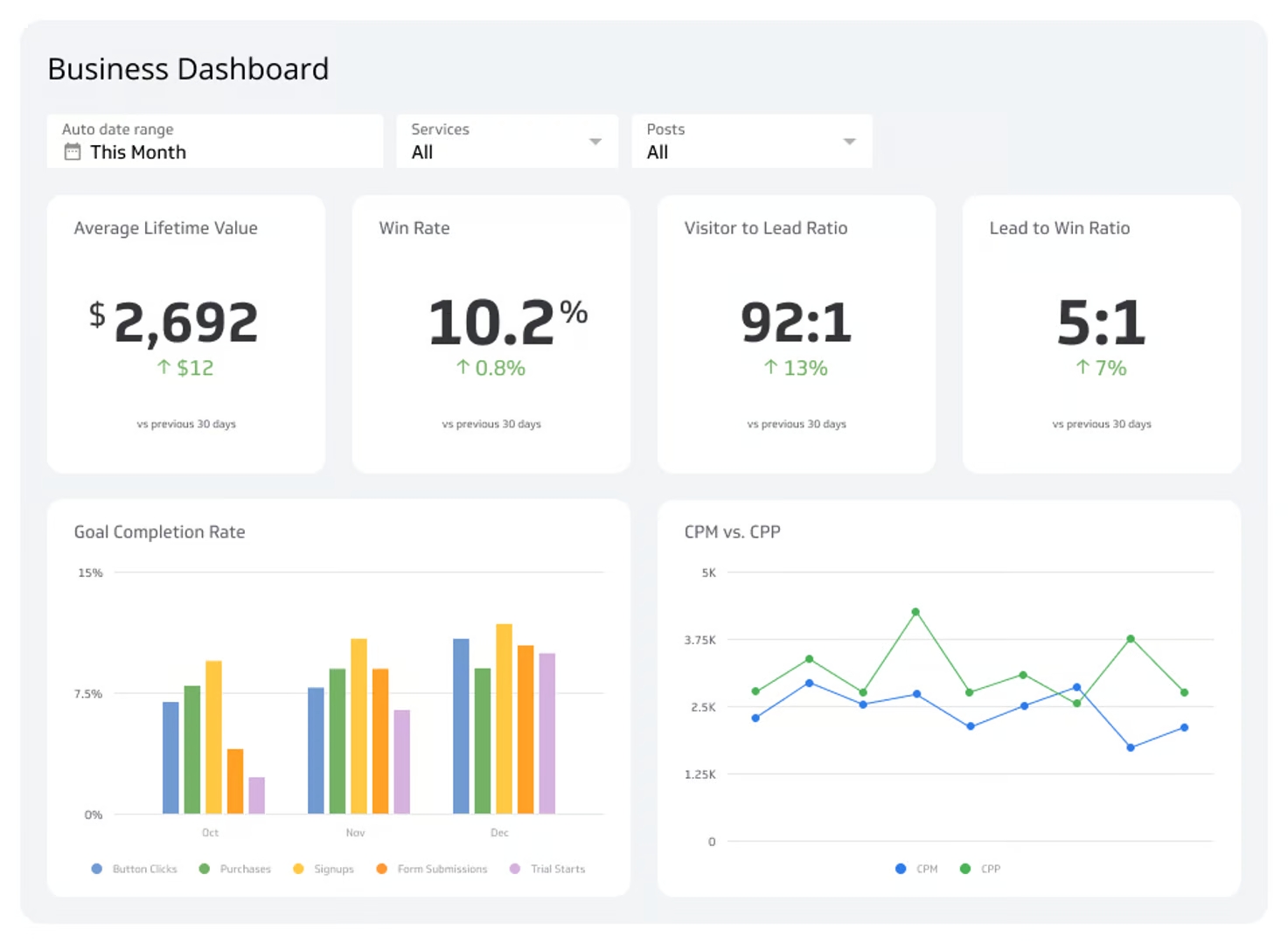Software Development Dashboard
Track sprint progress, code quality, and release velocity in one place.
What is a Software Development Dashboard?
A software development dashboard pulls all your key engineering and project data into one place. Instead of jumping between Jira, GitHub, Bitbucket, and your CI/CD tool, you get a single, real-time view of your team's performance and project health.
This dashboard is essential for engineering managers, Scrum Masters, and DevOps teams who need to track project progress, monitor code quality, and align on release schedules. It helps you stop guessing and start knowing. Are we spending too much time on bugs? Is our release pipeline healthy? Are we on track to hit our sprint goals? This dashboard answers those questions, helping you ship better code, faster.
Relevant KPIs and metrics
Here are some of the most critical metrics to include on your software development dashboard.
Project Burndown
The Project Burndown chart is your primary progress tracker in an Agile sprint. It shows the amount of work remaining (the "burn") versus the time left. Why it matters: It provides an immediate visual answer to "Are we on track?" If the "actual" line is consistently above the "ideal" line, you know the team is behind schedule and you can take action before the sprint ends.
Feature vs. Bug Investment
This metric tracks the ratio of time or effort your team spends on building new features versus fixing bugs or addressing technical debt. Why it matters: This is a critical balancing act. A high bug investment means quality issues are slowing down innovation. A healthy ratio ensures you're not just treading water but actively moving the product forward.
Release Tracker
The Release Tracker provides a high-level view of features that are in the pipeline, under review, and in progress. Why it matters: This visualization is perfect for stakeholders (like product managers or executives). It clearly answers "What's coming next?" and "When will that new feature be live?"
Cycle Time
Cycle Time measures the total time it takes for a task (like a feature or bug) to move from "In Progress" to "Done." Why it matters: This is a core metric for team efficiency and process health. Shorter cycle times mean a more agile, responsive team. If cycle times are creeping up, it often signals bottlenecks in your process, such as code reviews or testing.
Deployment Frequency
A key DORA metric, Deployment Frequency tracks how often your team successfully deploys code to production. Why it matters: This is a direct measure of your team's throughput and the health of your CI/CD pipeline. High-performing teams deploy frequently (daily or even multiple times a day), allowing for faster iteration and value delivery.
Change Failure Rate (CFR)
Change Failure Rate measures the percentage of deployments that result in a failure in production (e.g., causing an outage or requiring a hotfix). Why it matters: This is your main quality and stability metric. A low CFR indicates a reliable, robust development and testing process. If this number is high, you may be shipping code without sufficient quality checks.
Mean Time to Recovery (MTTR)
When a failure does happen, Mean Time to Recovery measures the average time it takes to restore service. Why it matters: This metric tracks your team's resilience. A low MTTR means you have strong monitoring, alerting, and rollback procedures. It’s not just about avoiding failure, but about recovering from it quickly.
How to get the most from your development dashboard
A dashboard is only useful if it drives action. Here’s how to make your dashboard a central part of your workflow.
Focus on what matters for your stage. A dashboard isn't one-size-fits-all.
- Startups: You're all about speed and iteration. Prioritize metrics like Sprint Velocity and Deployment Frequency.
- Growth-Stage: You need to balance growth with stability. This is when Feature vs. Bug Investment and Cycle Time become crucial for managing tech debt.
- Enterprise: Your focus is predictability and reliability. Change Failure Rate and MTTR are non-negotiable for protecting revenue and user trust.
Make it visible. Don't hide your dashboard in a folder. Put it on a TV in the engineering bay. Share a link in your team's Slack or Teams channel. When data is visible and shared, it creates alignment and natural accountability.
Connect all your sources. The real power comes from combining data. Pull metrics from your project management tool (like Jira), your code repository (like GitHub), and your CI/CD tool (like Jenkins). Seeing bug counts alongside deployment frequency gives you the context you can't get from a single tool.
Building a comprehensive software development dashboard can be tough, especially when your data is scattered across different platforms. You can use Klipfolio Klips to connect directly to services like Jira, GitHub, GitLab, and more. Pull all your key metrics into one automated, easy-to-share dashboard to keep your team aligned and shipping high-quality code.
Related Dashboards
View all dashboards



